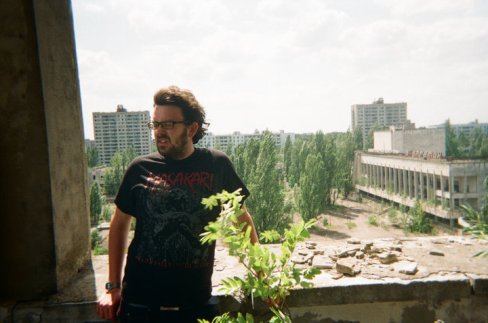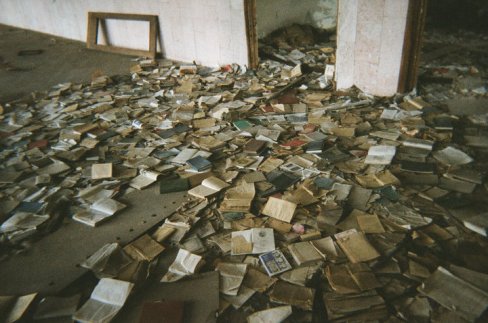Between 1974 and 1986 the UK’s nuclear energy industry had had no accidents or close calls of any kind. Control and safety systems had improved as a result of constant upgrades and advancements in technology. The industry understood that such improvements were vital. At the time the UK was a world leader in nuclear power. This was to change after 1986 with an event which took place 2,000km away in the Ukrainian SSR – the Chernobyl Disaster.
My father had worked with specialists who’d visited several member states of the Eastern Bloc during the 1980’s, primarily Hungary and Bulgaria, on fact finding tours. His colleagues had been very surprised by the inefficiency of how nuclear facilities were operated and how they suffered from archaic equipment. Before the disaster, the Chernobyl facility was not very well known to my father or his colleagues at Wylfa.
My father believes that the Chernobyl Disaster was caused by the station’s design – a purely randomized design the Russians had put together – with absolutely no comparison to anything in the UK or any other part of the world. A disaster waiting to happen – not helped by an insufficient operating system.
Mike, my companion to Chernobyl, at the Pripyat Hotel in 2010.
I visited the Chernobyl nuclear power plant and the nearby city of Pripyat in 2010, along with two friends – a generally considered idiotic place to go and perhaps that’s why we went there. We were in awe of the things we saw and I learnt a lot about how close Europe had come to becoming a nuclear wasteland.
This is how the Pripyat school looked like in 2010, 24 years after the disaster. Residents were asked to leave all their possessions and evacuate. The children’s work still decorates the many classrooms.
The people of Wylfa were shocked that the accident had been permitted to happen. They learnt of the negligence of the operators concerning the major problems the station was suffering prior to the accident.
The disaster attracted a great deal of international interest and new public interest in nuclear safety. As a consequence inspections were carried out at all UK nuclear sites. Public opinion resulted in politicians slowly becoming anti-nuclear. A lack of investment in nuclear power enabled other international countries to become new industrial players, such as the US and Japan. Only one station has since been built in the UK. Public opinion proved powerful and Tony Blair’s Labour government, 1997 to 2007, eventually resulted in the UK losing its world leader status. “A shocking state of affairs”, quotes my father.
Finally, in this part of the talk, I wanted to know my father’s opinion of Japan’s Fukushima Daiichi Nuclear Disaster in 2011. He told me that there had been relatively no upgrades to the station’s infrastructure since its construction in 1967. He believes that the station’s location was a very bad choice, it being at sea level and with no protection against tidal waves.
In conclusion both disasters could have been easily avoided and has no real reflection on nuclear safety. They were caused due to bad planning and poor management. Clear causes but it is difficult to convince the general public that nuclear power is safe.
We moved on to speaking about global nuclear politics.
I remember watching a TV report in 2010 about President Obama’s plan to build two nuclear power stations in Georgia and the public’s opposition to the plan. I asked my father why the US had not build any new stations in 30 years. In response he told me that the US had its own nuclear accident – the Three Mile Island Accident in Pennsylvania in 1979. The accident hit the public’s confidence in nuclear power and that lack of confidence remains. The US also has vast natural resources – coal, oil and gas – and does not need to depend on nuclear power like the UK.
I wanted to talk about the Middle East and in particular Iran. My father believes that developed nuclear nations will never assist Middle Eastern countries with nuclear energy industries because the byproduct of nuclear energy is weapons grade uranium. The anti-western ideology that exists in Middle Eastern countries also does not allow or tolerate the West coming and telling them what to do. Economics also plays its part. The cost of Western technology is too expensive for developing countries – the cost of installation and operating the systems outweigh the profits.
India and Pakistan did not independently develop their nuclear energy industries. WANO, the World Association of Nuclear Operators, gave them licenses to build sites with approved designs. Iran rejects WANO’s terms and wants to develop in their way, in a secretive manner.
In the final part of the talk we discussed renewable energy, nuclear waste, terrorism and the future of my father’s station – coming soon.


A generally considered idiotic place to go. In a world of annoying travelers who treat locations like they were notches on a belt, sometimes you have to take it further than the next level, sometimes you have to go to the end of the world.